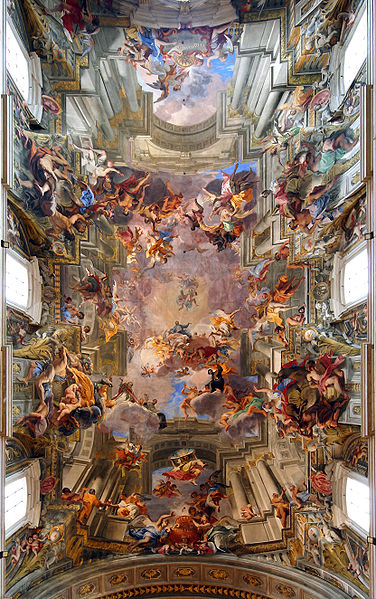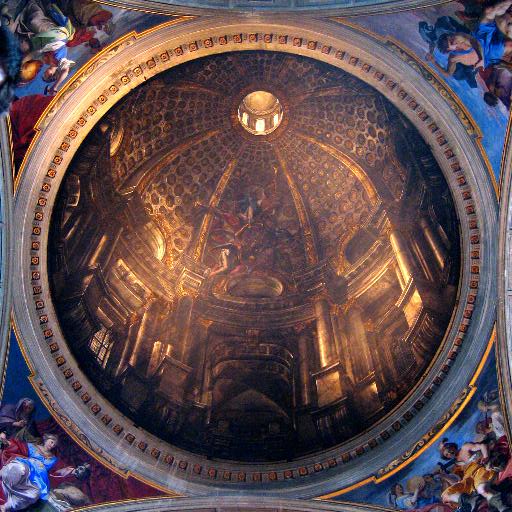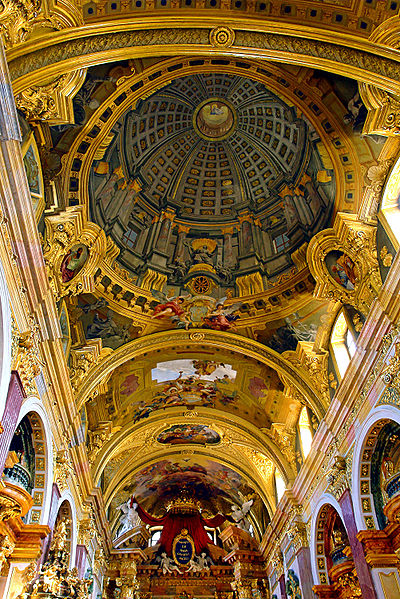<Back to Index>
- Painter Artemisia Gentileschi, 1593
- Painter Andrea Pozzo, 1642
PAGE SPONSOR
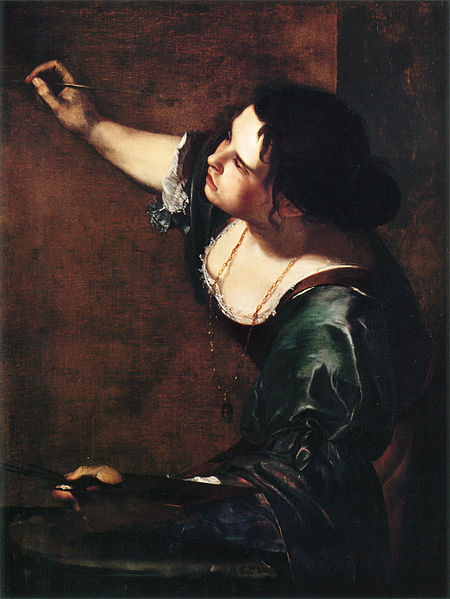
Artemisia Gentileschi (July 8, 1593 – 1652) was an Italian Baroque painter, today considered one of the most accomplished painters in the generation after Caravaggio. In an era when women painters were not easily accepted by the artistic community or patrons, she was the first female painter to become a member of the Accademia di Arte del Disegno in Florence.
She painted many pictures of strong and suffering women from myth and the Bible - victims, suicides, warriors - and made a specialty of the Judith story. Her best known image, Judith Beheading Holofernes shows the decapitation of Holofernes, a scene of horrific struggle and blood letting." That she was a woman painting in the 17th century and that she was raped herself and prosecuted the issue often distracted from her achievements as an artist. For many years she was regarded as merely a curiosity. Today she is regarded as one of the most progressive and expressionist painters of her generation, a major artist in her own right.
Artemisia Gentileschi was born in Rome on 8 July 1593, the eldest child of the Tuscan painter Orazio Gentileschi.
Artemisia was introduced to painting in her father's workshop, showing
much more talent than her brothers, who worked alongside her. She
learned drawing, how to mix color and how to paint. Since her father's
style took inspiration from Caravaggio during that period, her style was
just as heavily influenced in turn. But her approach to subject matter
was different from her father's, as her paintings are highly
naturalistic, where Orazio's are idealized. Orazio was a great
encouragement to his daughter since, during the 17th century, women were
considered not to have the intelligence to work. At the same time,
Artemisia had to resist the "traditional attitude and psychological
submission to this brainwashing and jealousy of her obvious talent". By doing so, she gained great respect and recognition for her work.
The first work of the young 17 year old Artemisia (some at the time suspected that she was helped by her father) was the Susanna e i Vecchioni (Susanna and the Elders) (1610, Schönborn collection in Pommersfelden). The picture shows how Artemisia assimilated the realism of Caravaggio without being indifferent to the language of the Bologna school (which had Annibale Carracci among its major artists). It is one of the few Susanna paintings showing the sexual assault by the two Elders as a traumatic event.
In 1612, her father was working with Agostino Tassi to decorate the vaults of Casino della Rose inside the Pallavicini Rospigliosi Palace in Rome, so Orazio hired the painter to tutor his daughter privately. During this tutelage, Tassi raped Artemisia. Another man, Cosimo Quorlis had helped Tassi with the rape. After the initial rape, Artemisia continued to have sexual relations with Tassi, with the expectation that they were going to be married. However, Tassi reneged on his promise to marry Artemisia after he heard the rumor that she was having an affair with another man. Orazio pressed charges against Tassi after he learned that Artemisia and Tassi were not going to be married. Orazio also claimed that Tassi stole a painting of Judith from the Gentileschi household. The major issue of this trial was the fact that Tassi had deflowered Artemisia. If Artemisia had not been a virgin before Tassi raped her, the Gentileschis would not have been able to press charges. In the ensuing seven month trial, it was discovered that Tassi had planned to murder his wife, had enjoined in adultery with his sister - in - law and planned to steal some of Orazio’s paintings. During the trial, Artemisia was given a gynecological examination and was tortured using thumbscrews. At the end of the trial Tassi was sentenced to imprisonment for one year, although he never served the time. The trial has influenced the feminist view of Artemisia Gentileschi during the late 20th century.
The painting Giuditta che decapita Oloferne (Judith beheading Holofernes) (1612 – 1613), displayed in the Capodimonte Museum of Naples, is striking for the violence portrayed. A month later, Orazio arranged for his daughter to marry Pierantonio Stiattesi, a modest artist from Florence. Shortly afterwards the couple moved to Florence, where Artemisia received a commission for a painting at Casa Buonarroti and became a successful court painter, enjoying the patronage of the Medici family and Charles I. It has been proposed that during this period Artemisia also painted the Madonna col Bambino (The Virgin and Child), currently in the Spada Gallery, Rome.
While in Florence, Artemisia and Pierantonio had four sons and one
daughter. But only the daughter, Prudenzia, survived to adulthood —
following her mother's return to Rome in 1621 and later move to Naples.
After her mother's death, Prudenzia slipped into obscurity and little is
known of her subsequent life.
In Florence, Artemisia enjoyed huge success. She was the first woman accepted into the Accademia delle Arti del Disegno (Academy of the Arts of Drawing). She maintained good relations with the most respected artists of her time, such as Cristofano Allori, and was able to garner the favors and the protection of influential people, starting with Granduke Cosimo II de' Medici and especially of the Granduchess Cristina. She had a good relationship with Galileo Galilei with whom she remained in epistolary contact for a long time. She was esteemed by Michelangelo Buonarroti the younger (nephew of the great Michelangelo): busy with construction of Casa Buonarroti to celebrate his notable relative, he asked Artemisia to produce a painting to decorate the ceiling of the gallery of paintings.
The painting represents an allegory of Allegoria dell'Inclinazione
(Allegory of the Inclination (natural talent)), presented under the
form of a young nude woman who holds a compass. It is believed that the
subject bears a resemblance to Artemisia. Indeed, in several of her
paintings, Artemisia's energetic heroines have a similar appearance to
her self portraits. Her success and gender fueled many rumors about her
private life. For example, it is believed that the case of her rape
released her from societal pressures, where there was an understanding
of why some of her works were filled with defiant and violent women. Notable works from this period include La Conversione della Maddalena (The Conversion of the Magdalene), and Giuditta con la sua ancella (Judith and her Maidservant), now in the Pitti Palace. Artemisia painted a second version of Giuditta che decapita Oloferne (Judith beheading Holofernes), this one larger than the Naples version and now housed in the Uffizi Gallery of Florence.
Despite her success, financial excesses born by herself and her husband
lead to problems with creditors and she fell out with her husband.
As a result she returned to Rome in 1621.
Artemisia arrived in Rome the same year her father Orazio departed for Genoa. Some believe that Artemisia followed her father there; while there is not enough evidence for this, this time together would have accentuated the similarity of their styles, which makes it often difficult today to determine which of the two painted certain works. Most of the evidence supports the notion that Artemisia remained in Rome, trying to find a home and raise her daughters. In addition to Prudenzia (born from the marriage with Pierantonio Stiattesi) she had another natural daughter, probably born in 1627. Artemisia tried, with almost no success, to teach them the art of painting.
Caravaggio's style, though the master had been dead over a decade, was still highly influential and converted many painters to his style (the so-called Caravaggisti) such as Artemisia's father Orazio, Carlo Saraceni (who returned to Venice 1620), Bartolomeo Manfredi, and Simon Vouet. However, painting styles in Rome during the early 17th century were diverse, a more classic manner of the Bolognese disciples of the Carracci and the baroque style of Pietro da Cortona.
It appears that Artemisia was also associated with the Academy of the Desiosi. She was celebrated with a portrait carrying the inscription "Pincturare miraculum invidendum facilius quam imitandum". In the same period she became friends with Cassiano dal Pozzo, a humanist, collector and lover of arts. However, despite her artistic reputation, her strong personality and her numerous good relationships, Rome was not as lucrative as she hoped. Her style and tone of defiance and strength relaxed: she painted more relaxing and feminine works. For instance, her second version of Susanna and the Elders (1622). The appreciation of her art was narrowed down to portraits and to her ability with biblical heroines: she received none of the lucrative commissions for altarpieces. The absence of sufficient documentation makes it difficult to follow Artemisia's movements in this period. It is certain that between 1627 and as late as 1630 she moved to Venice, perhaps in search of richer commissions, as verses and letters were composed in appreciation of her and her works in Venice.
Although it is sometimes difficult to date her paintings, it is possible to assign to her these years the Ritratto di gonfaloniere (Portrait of Gonfaloniere), today in Bologna (a rare example of her capacity as portrait painter); the Giuditta con la sua ancella (Judith and her Maidservant)
today housed at the Detroit Institute of Arts. The Detroit painting is
notable for her mastery of chiaroscuro and tenebrism (the effect of
extreme lights and darks), techniques for which Gerrit van Honthorst, Trophime Bigot, and many others in Rome were famous. Her Venere Dormiente (The Sleeping Venus), today at Virginia Museum of Fine Arts, Richmond, and her Ester ed Assuero (Esther and Ahasuerus) located at the Metropolitan Museum of Art in New York, are testimony of her assimilation of the lessons of Venetian luminism.
In 1630 Artemisia moved to Naples, a city rich with workshops and art lovers, in search of new and more lucrative job opportunities. Many other artists, including Caravaggio, Annibale Carracci, Simon Vouet had stayed in Naples for some time in their lives, and at that time, Jusepe de Ribera, Massimo Stanzione, and Domenichino were working there and later, Giovanni Lanfranco and many others would flock to the city. The Neapolitan debut of Artemisia is represented by the Annunciation in the Capodimonte Museum. She remained in Naples for the remainder of her career with the exception of a brief trip to London and some other journeys. Naples was for Artemisia a kind of second homeland where she took care of her family (both her daughters were married in Naples). She received letters of appreciation, being in good relations with the viceroy the Duke of Alcalá and started relations with many renowned artists, among them Massimo Stanzione, with whom, the eighteenth century writer Bernardo de' Dominici reports, she started an artistic collaboration based on a real friendship and artistic similarities.
In Naples for the first time Artemisia started working on paintings in a cathedral, dedicated to San Gennaro nell'anfiteatro di Pozzuoli (Saint Januarius in the amphitheater of Pozzuoli) in Pozzuoli. During her first Neapolitan period she painted Nascita di San Giovanni Battista (Birth of Saint John the Baptist) located in the Museo del Prado in Madrid, and Corisca e il satiro (Corisca and the satyr), in a private collection. In these paintings Artemisia again demonstrates her ability to renew herself with the novelties of the period and handle different subjects, instead of the usual Judith, Susanna, Bathsheba, and Penitent Magdalenes, for which she was already known.
In 1638 Artemisia joined her father in London at the court of Charles I of England, where Orazio became court painter and received the important job of decorating a ceiling (allegory of Trionfo della pace e delle Arti (Triumph of the peace and the Arts) in the Casa delle Delizie of Queen Henrietta Maria of France in Greenwich). Father and daughter were once again working together, although helping her father was probably not her only reason for traveling to London: Charles I had convoked her in his court, and it was not possible to refuse. Charles I was a fanatical collector, willing to ruin public finances to follow his artistic wishes. The fame of Artemisia probably intrigued him, and it is not a coincidence that his collection included a painting of great suggestion, the Autoritratto in veste di Pittura ("Self Portrait as the Allegory of Painting.").
Orazio suddenly died in 1639. Artemisia had her own commissions to fulfill after her father's death, although there are no known works assignable with certainty to this period. It is known that Artemisia had already left England by 1642, when the civil war was just starting. Nothing much is known about her subsequent movements. Historians know that in 1649 she was in Naples again, corresponding with Don Antonio Ruffo of Sicily who became her mentor and good commitment during this second Neapolitan period. The last known letter to her mentor is dated 1650 and makes clear that she was still fully active. Artemisia was once thought to have died in 1652 - 1653. Recent evidence, however, has shown that she was still accepting commissions in 1654 — though increasingly dependent on her assistant, Onofrio Palumbo. Thus it might be speculated that she died in the devastating plague that swept Naples in 1656 and virtually wiped out an entire generation of Neapolitan artists.
Some works in this period are Susanna e i vecchioni (Susanna and the elders) today in Brno and Madonna e Bambino con rosario (Virgin and Child with a Rosary) today in El Escorial.
A research paper of Roberto Longhi, an important Italian critic, dated 1916, named Gentileschi padre e figlia (Gentileschi father and daughter) described Artemisia as "the only woman in Italy who ever knew about painting, coloring, doughing and other fundamentals". Longhi also wrote of Judith Slaying Holofernes: "There are about fifty - seven works by Artemisia Gentileschi and 94% (forty - nine works) feature women as protagonists or equal to men". These include her works of Jaels and Sisera, Judith (Judith and her Maidservant), and Esther. These characters intentionally lacked the typical feminine traits — sensitivity, timidness and weakness — and were courageous, rebellious, and powerful personalities. A 19th century personality commented on Artemisia's Magdalene stating, "no one would have imagined that it was the work of a woman. The brush work was bold and certain, and there was no sign of timidness". She was well aware of how females and female artists were viewed by men therefore explains why her works in the beginning of her career were bold and defiant.
Who could think in fact that over a sheet so candid, a so brutal and terrible massacre could happen [...] but - it's natural to say - this is a terrible woman! A woman painted all this?... there's nothing sadistic here, instead what strikes the most is the impassibility of the painter, who was even able to notice how the blood, spurting with violence, can decorate with two drops the central spurt! Incredible I tell you! And also please give Mrs. Schiattesi - the conjugal name of Artemisia - the chance to choose the hilt of the sword! At last don't you think that the only aim of Giuditta is to move away to avoid the blood which could stain her dress? We think anyway that that is a dress of Casa Gentileschi, the finest wardrobe in the Europe during 1600, after Van Dyck.
Feminist studies increased the interest towards Artemisia's artistic work and life. Such studies underlined her suffering of rape and subsequent mistreatment, and the expressive strength of her paintings of biblical heroines, in which the women are interpreted as willing to manifest their rebellion against their condition. In a research paper from the catalog of the exhibition "Orazio e Artemisia Gentileschi" which took place in Rome in 2001 (and after in New York), Judith W. Mann gives a feminist opinion of Artemisia:
An opinion like that presupposes that the full creative potential of Artemisia is only about strong capable women, at the point that seems impossible to imagine her busy doing conventional religious images, like a Virgin Mary with a Baby or a virgin submissively waiting for the Annunciation; and besides it is said that the artist refused to modify her personal interpretation of those subjects to conform to the preferences of a client base presumably composed by males. The stereotype caused a double restrictive effect: it both induced the critics to doubt about the attribution of the paintings not corresponding to described model, and to give an inferior value to the ones not found on the cliché.
Because Artemisia returned again and again to violent subject matter such as Judith and Holofernes, a repressed vengeance theory has been postulated. However, some art historians suggest that she was shrewdly playing on her fame from the rape trial to cater to a niche market in sexually charged, female dominant art for male patrons.
The most recent critic, starting from the difficult reconstruction of
the entire catalog of the Gentileschi, tried to give a less reductive
reading of the career of Artemisia, placing it more accurately in the
context of the different artistic environments in which the painter
actively participated. A reading like this restores Artemisia as an
artist who fought with determination, using the weapon of personality
and of the artistic qualities, against the prejudices expressed against
women painters; being able to introduce herself productively in the
circle of the most respected painters of her time, embracing a series of
pictorial genres which were probably more ample and varied than her
paintings suggest.
For a woman at the beginning of the 17th century, being a painter like Artemisia represented an uncommon and difficult choice, but not an exceptional one. Before Artemisia, between the end of the 1500 and the beginning of 1600 other female painters had successful careers, including Sofonisba Anguissola (Born in Cremona around 1530 - Palermo around 1625), was called into Spain by King Philip II and Lavinia Fontana (Bologna, 1552 - Rome 1614) departed for Rome by invitation of Pope Clement VIII. Later Fede Galizia (Milano or Trento, 1578 - Milano 1630) painted still lifes and a Judith with the head of Holofernes.
Other female painters began their career while Artemisia was alive.
Judged on their artistic merits, Longhi's statement that Artemisia was
"the only woman in Italy who ever knew about painting" may be
questioned, but there is no doubt that Artemisia continues to be among
the most highly regarded of female artists, and has finally taken her
place among the great artists of the Baroque.
The first writer who produced a novel around the figure of Artemisia was Anna Banti, wife of Roberto Longhi. Her first draft of the manuscript, dated 1944, was lost during the war. Three years later she started again with the book, to be called Artemisia, writing in a much different form. Banti's book is written in an "open diary" form, in which she maintains a dialog with Artemisia, trying to understand why she finds her so fascinating.
More than 50 years later, in 1999, the French writer Alexandra Lapierre became fascinated by Artemisia and wrote a novel about her, derived from scrupulous study of the painter and the historical context of her work. The novel seeks to understand the relation between Artemisia the woman and Artemisia the painter, and ends with describing as "leitmotiv" the relation between her and her father, composed of both love insufficiently expressed, and a latent professional rivalry. Artemisia, and more specifically her painting Judith Beheading Holofernes, are referred to in Wendy Wasserstein's 1988 play The Heidi Chronicles, where the main character Heidi lectures about it as part of her art history course on female painters. At the end of the play, Heidi adopts a daughter she names Judy, which is at least a partial reference to the painting. Canadian playwright Sally Clark wrote several stage plays based on the events leading up to and following the rape of Artemisia. "Life Without Instruction" was commissioned by Nightwood Theatre in 1988, and was developed during an Ontario Arts Council Playwright's Residency in 1989. It was workshopped in 1990, under the direction of Kate Lushington and dramaturged by Jackie Maxwell. "Life Without Instruction" premiered at Theatre Plus Toronto on August 2, 1991.
In 2002, Susan Vreeland's The Passion of Artemisia was published by Penguin.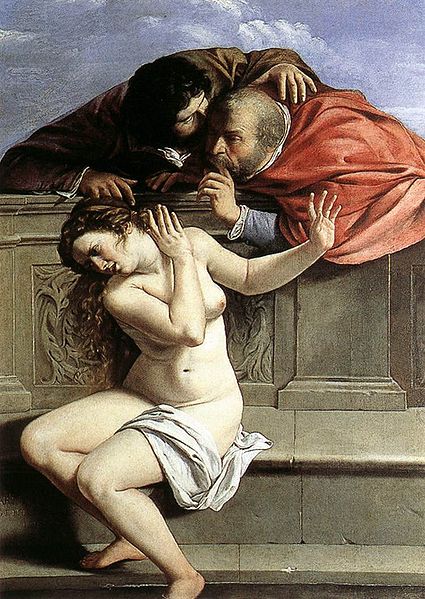
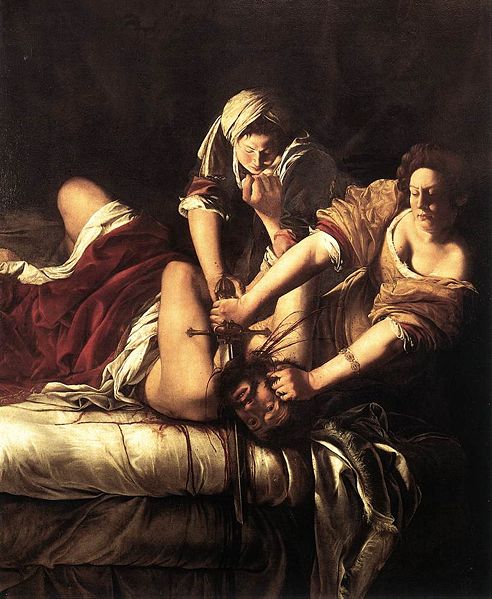
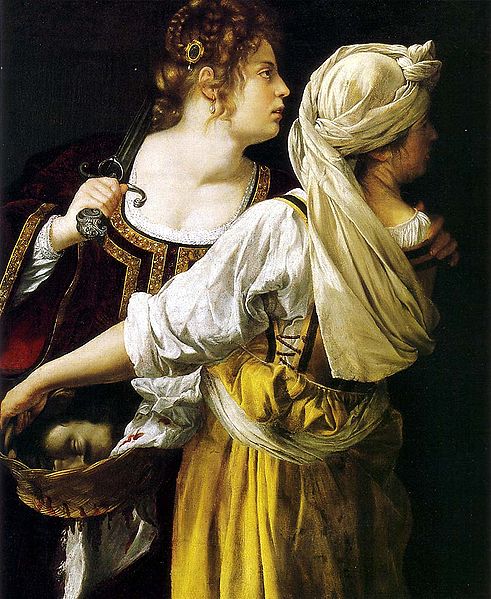
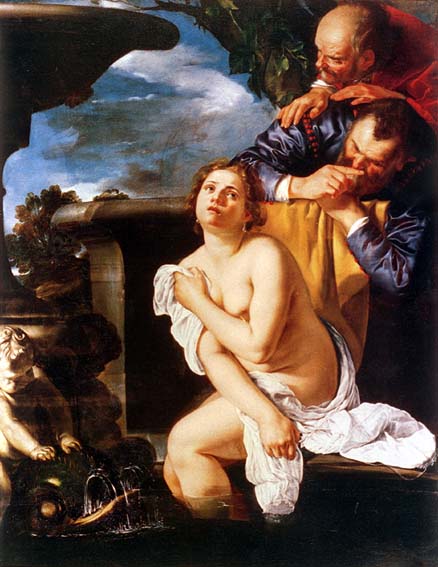
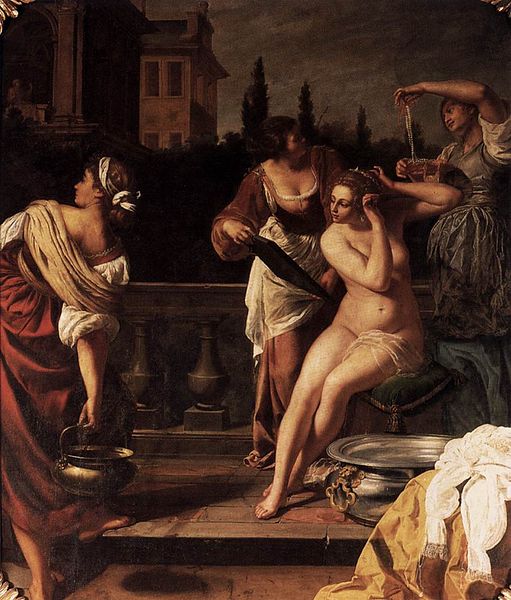
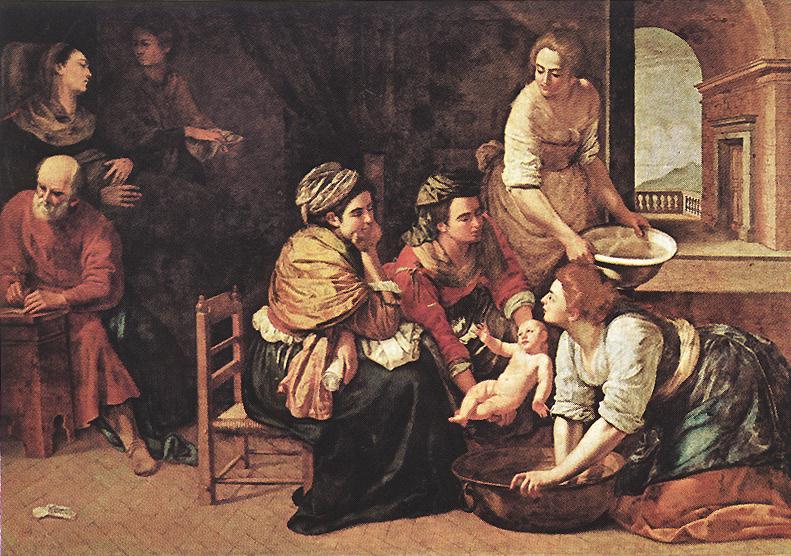
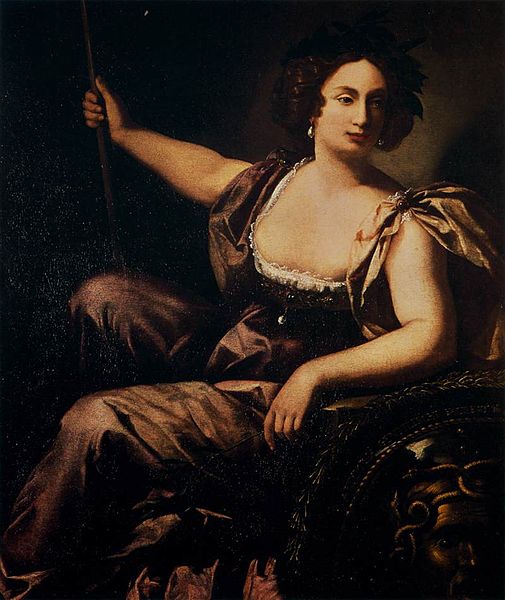
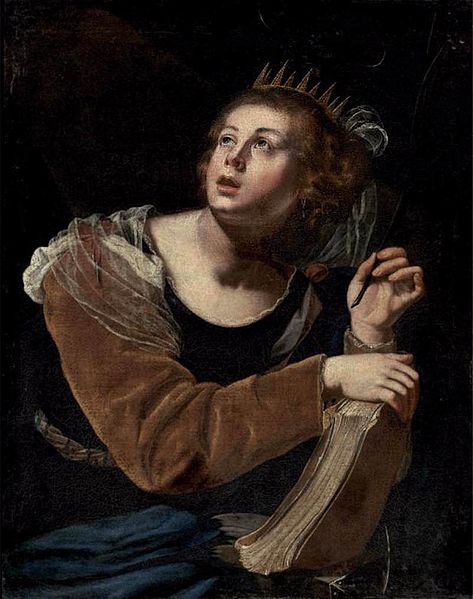
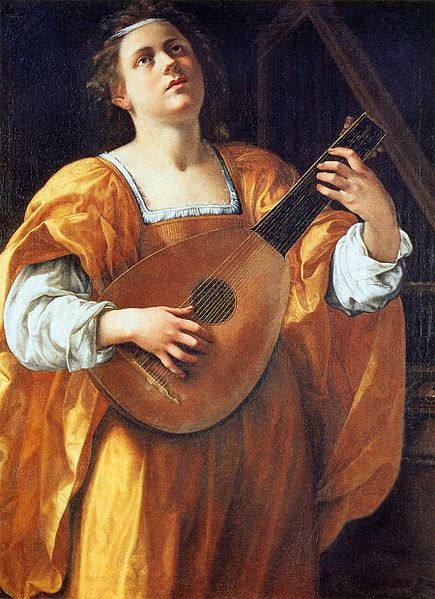
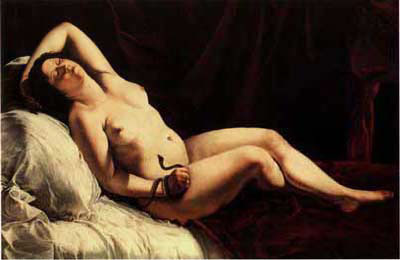
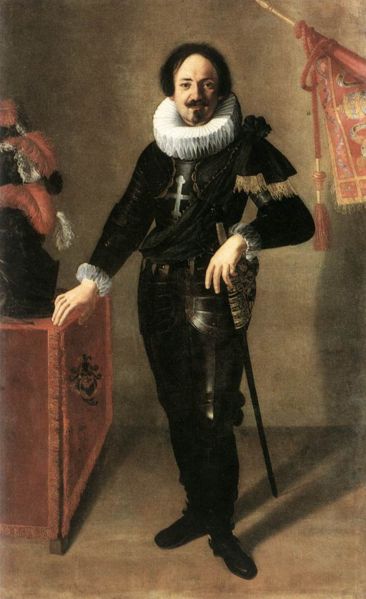
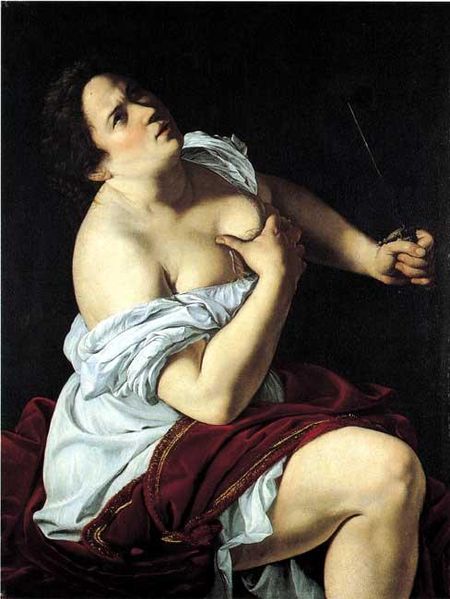
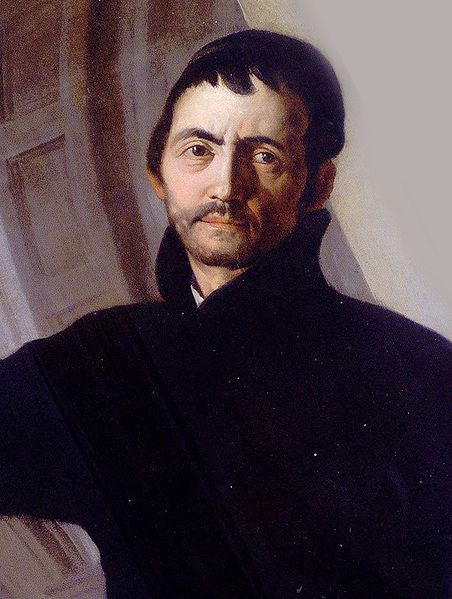
Andrea Pozzo (Latinized version: Andreas Puteus; 30 November 1642 - 31 August 1709) was an Italian Jesuit Brother, Baroque painter and architect, decorator, stage designer and art theoretician. He was best known for his grandiose frescoes using an illusionistic technique called quadratura, in which architecture and fancy are intermixed. His masterpiece is the nave ceiling of the Church of Sant' Ignazio in Rome. Through his techniques, he has become one of the most remarkable figures of the Baroque period.
Born in Trento (then under Austrian rule), he did his Humanities at the local Jesuit High School. Showing artistic inclinations he was sent by his father to work with an artist; Pozzo was then 17 years old (in 1659). From aspects of his early style this initial artistic training came probably from Palma il Giovane. After three years he passed under the guidance of another unidentified painter from the workshop of Andrea Sacchi who appears to have taught him the techniques of Roman High Baroque. He would later travel to Como and Milan.
On 25 December 1665, he entered the Jesuit Order as a lay brother. In 1668, he was assigned to the Casa Professa of San Fidele in Milan, where his festival decorations in honor of Francis Borgia recently canonized (1671) met general approval. He continued artistic training in Genoa and Venice. His early paintings attest to the influence of the Lombard School: rich color, graphic chiaroscuro. When he painted in Genoa the Life of Jesus for the Congregazione de' Mercanti, he was undoubtedly inspired by Peter Paul Rubens.
His artistic activity was related to the new (relative to Catholic Church's medieval monastic orders) Order's enormous artistic needs; since many of the Jesuit churches were built in recent decades and were devoid of painted decoration. He was frequently employed by the Jesuits to decorate churches and buildings such as their churches of Modena, Bologna and Arezzo. In 1676, he decorated the interior of San Francis Xavier church in Mondovì. In this church one can already see his later illusionistic techniques: fake gilding, bronze colored statues, marbled columns and a trompe - l'oeil dome on a flat ceiling, peopled with foreshortened figures in architectural settings. This was his first large fresco.
In Turin (1678), he painted the ceiling of the Jesuit church of SS. Martiri. The frescoes gradually deteriorated through water infiltration. They were replaced in 1844 by new paintings by Luigi Vacca. Only fragments of the original frescoes survive.
In 1681, Pozzo was called to Rome by Giovanni Paolo Oliva, Superior General of the Jesuits. Among others, Pozzo worked for Livio Odescalchi, the powerful nephew of the pope, Innocent XI. Initially he was used as a stage designer for biblical pageants, but his illusionistic paintings in perspective for these stages gave him soon a reputation as a virtuoso in wall and ceiling decorations.
His first Roman frescoes were in the corridor linking the Church of the Gesù to the rooms where St.Ignatius had lived. His trompe l'oeil architecture and paintings depicting the Saint's life for the Camere di San Ignazio (1681 – 1686), blended well with already existing paintings by Giacomo Borgognone.
His masterpiece, the illusory perspectives in frescoes of the dome, the apse and the ceiling of Rome's Jesuit church of Sant' Ignazio were painted between 1685 – 1694 and are a remarkable and emblematic creation of High Roman Baroque. For several generations, they set the standard for the decoration of Late Baroque ceiling frescos throughout Catholic Europe. Compare this work to Gaulli's masterpiece in the other major Jesuit church in Rome, Il Gesù.
The project had not started upon the church's completion; Sant'Ignazio remained unfinished even after its consecration in 1642. Disputes with the original donors, the Ludovisi, had stopped construction of the planned dome. Pozzo expediently proposed to make an illusionistic dome, when viewed from inside, by painting on canvas. It was impressive to viewers, but controversial; some feared the canvas would soon darken.
On the flat ceiling he painted an allegory of the Apotheosis of S. Ignatius, in breathtaking perspective. The painting, 17 m in diameter, is devised to make an observer, looking from a spot marked by a brass disc set into the floor of the nave, seem to see a lofty vaulted roof decorated by statues, while in fact the ceiling is flat. The painting celebrates the missionary spirit of two centuries of adventurous apostolic spirit of Jesuit explorers and missionaries. To modern sensitivity, this would appear to promotee the expansion of Roman Catholicism, along with the overseas enterprises of the day, to other continents. It was also a combative Catholicism. For example, in the pendentives rather than placing the usual evangelists or scholarly pillars of doctrine, he depicted the victorious warriors of the old testament: Judith and Holofernes; David and Goliath; Jael and Sisera; and Samson and the Philistines. It is said that when completed, some said "Sant' Ignazio was a good place to buy meat, since four new butchers are now there."
In the nave fresco, Light comes from God the Father to the Son who transmits it to St. Ignatius, whence it breaks into four rays leading to the four continents. Pozzo explained that he illustrated the words of Christ in Luke: I am come to send fire on the earth, and the words of Ignatius: Go and set everything aflame. A further ray illuminates the name of Jesus. With its perspective, space - enlarging illusory architecture and with the apparition of the heavenly assembly whirling above, the ensemble offered an example which was copied in several Italian, Austrian, German and Central European churches of the Jesuit order.
The architecture of the trompe - l'oeil dome seems to erase and raise the ceiling with such a realistic impression that it is difficult to distinguish what is real or not. Andrea Pozzo painted this ceiling and trompe - l'oeil dome on a canvas, 17 m wide. The paintings in the apse depict scenes from the life of St. Ignatius, St Francis Xavier and St Francis Borgia.
In 1695 he was given the prestigious commission, after winning a competition against Sebastiano Cipriani and Giovanni Battista Origone, for an altar in the St. Ignatius chapel in the left transept of the Church of the Gesù. This grandiose altar above the tomb of the saint, built with rare marbles and precious metals, shows the Trinity, while four lapis lazuli columns (these are now copies) enclose the colossal statue of the saint by Pierre Legros. It was the coordinated work of more than 100 sculptors and craftsmen, among them Pierre Legros, Bernardino Ludovisi, Il Lorenzone and Jean - Baptiste Théodon. Andrea Pozzo also designed the altar in the Chapel of St Francesco Borgia in the same church.
In 1697 he was asked to build similar Baroque altars with scenes from the life of St Ignatius in the apse of the Sant' Ignazio church in Rome. These altars house the relics of St. Aloysius Gonzaga and of St. John Berchmans.
Meanwhile he continued painting frescoes and illusory domes in Turin,
Mondovì, Modena, Montepulciano and Arezzo. In 1681 he was asked by
Cosimo III de' Medici, Grand Duke of Tuscany to paint his self portrait
for the ducal collection (now in the Uffizi
in Florence). This oil on canvas has become a most original
self portrait. It shows the painter in a diagonal pose, showing with his
right index finger his illusionist easel painting (a trompe - l'oeil
dome, perhaps of the Badia church in Arezzo) while his left hand rests
on three books (probably alluding to his
not yet published treatises on perspective). The painting was sent to
the duke in 1688. He also painted scenes from the life of St Stanislaus
Kostka in the saint's rooms of the Jesuit noviciate of Sant'Andrea al
Quirinale in Rome.
In 1694 Andrea Pozzo had explained his illusory techniques in a letter to Anton Florian, Prince of Liechtenstein and ambassador of Emperor Leopold I to the Papal Court in Rome. Recommended by Prince Liechtenstein to the emperor, Andrea Pozzo, on the invitation of Leopold I, moved in 1702 (1703?) to Vienna.There he worked for the sovereign, the court, Prince Johann Adam von Liechtenstein, and various religious orders and churches, such as the frescoes and the trompe - l'oeil dome in the Jesuit Church. Some of his tasks were of a decorative, occasional character (church and theater scenery), and these were soon destroyed.
His most significant surviving work in Vienna is the monumental ceiling fresco of the Hercules Hall of the Liechtenstein garden palace (1707), an Admittance of Hercules to Olympus, which, according to the sources, was very admired by contemporaries. Through illusionistic effects, the architectural painting starts unfolding at the border of the ceiling, while the ceiling seems to open up into a heavenly realm filled with olympian gods.
Some of his Viennese altarpieces have also survived (Vienna's Jesuit church). His compositions of altarpieces and illusory ceiling frescoes had a strong influence on the Baroque art in Vienna. He also had many followers in Hungary, Bohemia, Moravia, Slovakia, and even in Poland. His canvases show him to be a far less compelling a painter at close inspection.
Pozzo published his artistic ideas in a noted theoretical work, entitled Perspectiva pictorum et architectorum
(2 volumes, 1693, 1698) illustrated with 118 engravings, dedicated to
emperor Leopold I. In it he offered instruction in painting architectural perspectives
and stage sets. The work was one of the earliest manuals on perspective
for artists and architects and went into many editions, even into the
nineteenth century, and has been translated from the original Latin and
Italian into numerous languages such as French, German, English and
Chinese thanks to Pozzo's Jesuit connection.
There are a few architectural designs in his book Perspectiva pictorum et architectorum, indicating that he did not make any designs before 1690. These designs were not realized, but the design for the S. Apollinare church in Rome was used for the Jesuit church of S Francesco Saverio (1700 – 1702) in Trento. The interior of this church was equally designed by Pozzo.
At about the same time, between 1701 and 1702, he designed the Jesuit
churches of San Bernardo and Chiesa del Gesù in Montepulciano. But his
plans for the last church were only partly realized. He is also
noted for the construction of the cathedral of St. Nicholas in
Ljubljana (1708), inspired by the designs of the Jesuit churches Il Gesù
and S. Ignazio in Rome.
He died in Vienna in 1709 at a moment when he intended to return to Italy to design a new Jesuit church in Venice. He was buried with great honors in one of his best realizations, the Jesuit church in Vienna.
His brother, Giuseppe Pozzo, became a barefooted and Carmelite monk of Venice,
and was also a painter. He decorated the high altar of the church of
the Scalzi in that city during the last years of the 17th century.
